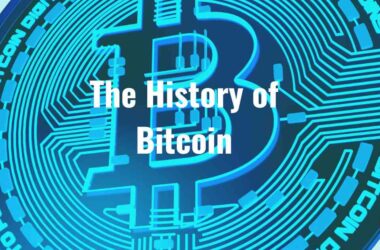Current NFT Trends. Welcome to the exciting world of NFTs, where digital artwork is taking the market by storm. You’ve probably heard about these non-fungible tokens in recent months, with skyrocketing sales and influential artists diving headfirst into this groundbreaking technology.
Introduction to NFTs and their Growing Popularity
- NFTs, or non-fungible tokens, have recently exploded in popularity, becoming one of the hottest trends in the digital world.
- To understand NFTs, we first need to understand fungibility. For example, a dollar bill is fungible – if you were to exchange it for another dollar bill, you would still have the same value.
- NFTs function opposite to this concept; they are non-fungible which means there can only be one specific version of that asset and no exact replica can be created. This makes each NFT unique and irreplaceable.
- NFTs use blockchain technology to serve as a digital certificate of ownership for any type of asset – whether it’s a piece of artwork, audio file, video clip or even a tweet.
Definition of NFTs
NFTs, or non-fungible tokens, have been gaining a lot of attention in the digital world recently. But what exactly are they? In simple terms, NFTs are unique blockchain-based digital assets that represent ownership and authenticity of a specific item or artwork. These items can range from images, videos, music, to even tweets and memes.
To understand why NFTs are gaining so much popularity, it’s important to first understand their definition. In other words, each NFT is completely distinct and one-of-a-kind.
This uniqueness is possible because NFTs utilize blockchain technology – the same technology behind cryptocurrencies like Bitcoin. Blockchain is a decentralized digital ledger that records information in a tamper-proof manner. Each NFT has its own unique code recorded on the blockchain which verifies its ownership and authenticity.
NFTs provide a clear chain of ownership thanks to their digitally recorded data on the blockchain. This makes it easy for buyers to trust the legitimacy of their purchase.
Brief History of NFTs
- NFTs, or non-fungible tokens, have taken the digital world by storm in recent years. While they may seem like a new and modern concept, the truth is that NFTs have actually been around for quite some time.
- This initial implementation allowed users to assign unique ownership rights to different pieces of data on the blockchain, essentially creating non-fungible tokens.
- Ethereum and CryptoKitties: It wasn’t until 2017 with the launch of Ethereum that NFTs started gaining mainstream attention. With its smart contract capabilities and focus on decentralized applications (DApps),
- Ethereum quickly became a popular platform for developers looking to explore new use cases for blockchain technology.
Why NFTs are gaining traction in the market
NFTs, or non-fungible tokens, have taken the digital world by storm and have become a hot topic in the mainstream media. In simple terms, NFTs are unique digital assets that are verified on a blockchain network, making them one-of-a-kind and impossible to replicate. This has caused an explosion of interest in NFTs as a new way to buy and sell digital goods.
While these categories have seen immense success with NFT sales reaching millions of dollars, there is potential for NFTs to spread into various industries such as music, gaming, ticketing systems, and more.
One of the biggest reasons for this growth is the concept of ownership and scarcity. With traditional digital assets such as images or videos easily copied and shared online, their value is often diminished.
NFT Market Explosion: A Surge in Popularity
- The world of non-fungible tokens (NFTs) has gained massive popularity in recent years, evolving from a niche market to a booming industry. As cryptocurrencies become more mainstream and digital art gains recognition, the NFT market has experienced an explosion in both value and interest from collectors, artists, and investors.
- One of the main reasons for the surge in popularity of NFTs is their unique nature. This scarcity adds to their value, making them highly sought after by collectors.
- This record-breaking sale caught the attention of many and sparked widespread interest in the technology behind it.
- As more people became aware of NFTs and their potential for investment opportunities, the market saw an influx of buyers looking to purchase these unique tokens.
Celebrity NFTs: Stars Joining the Digital Art Craze
In fact, even some of the biggest celebrities have jumped on board and joined the world of NFTs. This convergence of fame and technology has given rise to a new phenomenon – celebrity NFTs.
So, what exactly are celebrity NFTs? Simply put, they are non-fungible tokens that are created or endorsed by famous individuals. These tokens can take various forms such as digital artwork, videos, music albums, or even virtual real estate.
This piece featured a song by Grimes and visual artwork by Beeple that represented her fetus avatar from her album cover. It sold for $389,000 in February 2021 at auction house Christie’s.
Metaverse and NFTs: Blurring the Lines of Reality
NFTs are unique digital assets that are verified on blockchain technology, making them one-of-a-kind and immutable.
They can represent anything from artworks, music, videos, collectibles, and even virtual real estate within online worlds or games.
One notable example is Decentraland – a decentralized VR platform built on Ethereum’s blockchain. In Decentraland’s virtual world, users can buy plots of land using MANA tokens (Decentraland’s native cryptocurrency).
For instance: artists can sell their digital artwork directly to buyers without intermediaries taking a cut; game developers can create
Sustainability Concerns in NFTs: The Eco-Friendly Movement
As the world becomes increasingly digital, the rise of NFTs (Non-Fungible Tokens) has attracted attention from both artists and investors.
The environmental aspects of NFTs have been a topic of discussion among experts and critics alike. The creation and sale of NFTs require high levels of energy consumption due to their complex infrastructure built on blockchain technology.
In fact, according to a recent study by Memo Akten, a computational artist and researcher at Goldsmiths University London, the average carbon footprint per transaction for an NFT is equivalent to one month’s worth of electricity supply for an average American household.
Summary
The world of non-fungible tokens (NFTs) has been gaining massive popularity in recent months, with the explosion of digital art and collectibles taking over the internet. NFTs have become a hot topic in the world of cryptocurrency, making headlines and breaking records with every new auction or sale.
Frequently Asked Questions (FAQS)
What exactly is an NFT?
An NFT is a unique digital asset that is verified on a blockchain network, making it one-of-a-kind and not interchangeable with any other token. This means that each NFT has its own distinct value and cannot be duplicated or replicated.
How do I buy an NFT?
NFTs are typically bought using cryptocurrency such as Ethereum or Bitcoin on specialized marketplaces like OpenSea, Rarible, or Foundation. These platforms allow creators to mint their own NFTs and sell them directly to buyers.
Why are some NFTs selling for millions of dollars?
Similar to traditional art, collectibles, and other assets, the value of an NFT is determined by its perceived worth in the market. Some factors that contribute to high-priced sales include scarcity, popularity of the creator, uniqueness of the artwork/collectible, and demand from collectors.
Can I create my own NFT?
Yes! Many platforms now allow anyone to create and upload their own digital assets as NFTs without needing technical knowledge or skills. However, it’s important to note that not every piece will automatically become valuable – there
Conclusion
In conclusion, NFTs are currently at the forefront of digital art and collectibles with a rapidly growing market. The hype around them may decrease in the future, but their impact on the art world and technology is undeniable. From unique pieces selling for millions to affordable trading cards, there’s something for every level of collector. As this space continues to evolve and new trends emerge, it will be interesting to see how NFTs shape the future of ownership and value in the digital age.













